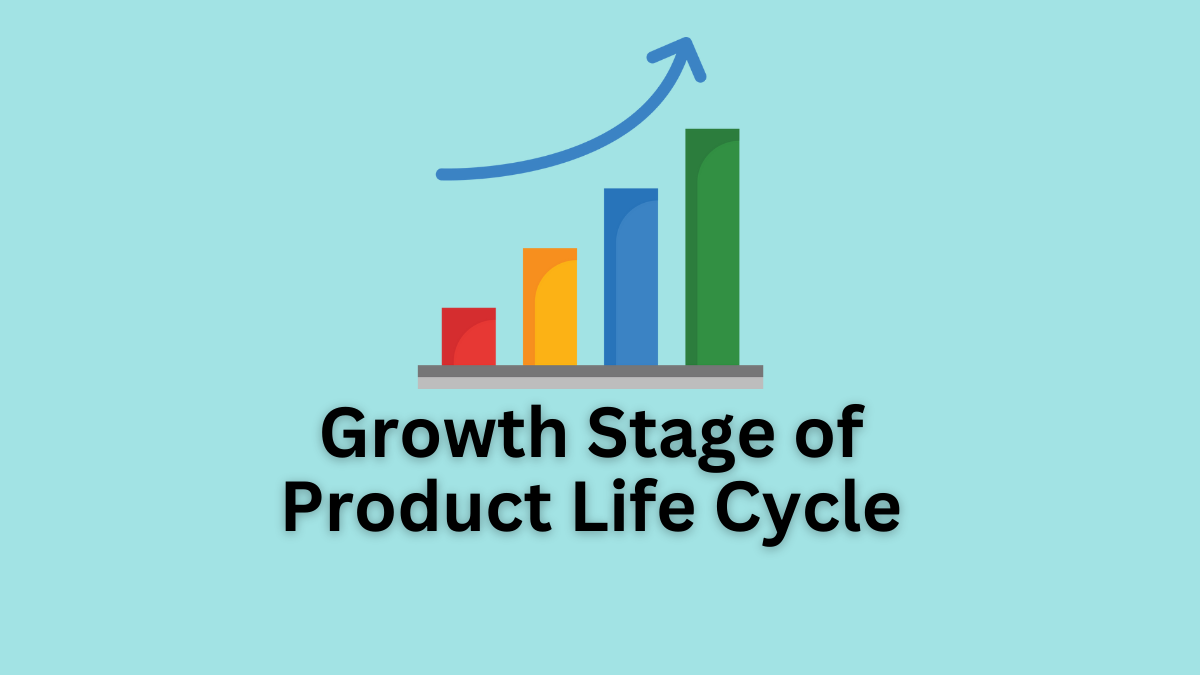What is the Growth Stage in PLC?
The growth stage in the product life cycle (PLC) marks a time of rapid expansion for a product. At this stage, more people learn about the product, leading to increased sales and profits. Customers’ choices become diverse, prompting companies to expand their product varieties.
With growing demand, competition intensifies as new players enter the market. To keep up, companies focus on persuasive promotions, convincing customers to choose their products. Prices are set competitively, and distribution channels are expanded to meet rising customer needs.
This stage is crucial for businesses, as they strive to establish a strong market presence and maximize profits. It’s a period of dynamic growth and increasing market recognition, shaping the product’s future success.
Characteristics of Growth Stage
The growth stage of PLC is characterized by the following key points:
- Fast Sales and Profits Growth: In the growth stage, sales and profits rise quickly. More and more customers discover the product, leading to increased demand and financial gains.
- Expanded Product Variety: To cater to a wider range of customers, companies introduce more product variations. It’s similar to offering different flavors of ice cream to please various tastes.
- Growing Competition: As the market flourishes, new players jump in to seize opportunities. The playground gets crowded, and companies need to sharpen their strategies to stay competitive. It’s similar to more athletes joining a race.
- Persuasive Promotion: Instead of simply informing customers about the product, companies use persuasive tactics in their marketing. They aim to convince customers that their product is the best choice, much like a friend persuading you to try a new restaurant.
- Lower Unit Costs: With increased production and efficiency, unit costs decrease. Think of it as making more sandwiches in a single batch, reducing the cost of making each one. This efficiency benefits the company’s bottom line.
Read More: Introduction Stage – Definition
Strategies For Growth Stage
Growth strategy is where companies start to realize their growth potential and it is must they capture the right market segment. Here are the 6 key marketing strategies for the successful growth stage of the product life cycle:
Product Diversification
Offering a range of products or product variations can be a powerful strategy during the growth stage. It’s akin to a fashion brand expanding its clothing lines to include casual wear, formal attire, and sportswear. By diversifying your product line, you can attract a broader audience and meet the diverse needs and preferences of customers. This diversification can create more opportunities for sales and increase your market share.
Competitive Pricing
Price plays a significant role in the growth stage. Consider setting competitive prices that are attractive to your target audience. It’s like a smartphone manufacturer adjusting the price of its latest model to compete effectively with other brands. Competitive pricing can help you capture a larger customer base and increase your market penetration, ultimately driving higher sales volumes.
Read More: STP in Marketing – Definition
Wider Distribution
Expanding your distribution channels is crucial to reach more potential customers. Think of it as a local artisanal coffee shop opening new locations in different neighborhoods. By widening your distribution network, you make your products more accessible, attracting customers who might not have had easy access to them previously. This strategy not only increases sales but also strengthens your brand’s presence in the market.
Persuasive Promotion
In the growth stage, promotional efforts should focus on persuasion rather than mere information. It’s similar to a politician campaigning to convince voters why they should choose a particular candidate. Use persuasive advertising and marketing tactics to influence customer decisions. Show them why your product is the best choice, highlighting its unique features and advantages. This approach can help you win over more customers and maintain a competitive edge.
Quality Improvement
Continuous product improvement is essential to stay ahead in the growth stage. Think of it as a software company releasing regular updates to enhance its product’s performance and features. By investing in research and development, you can ensure that your product remains competitive and meets or exceeds customer expectations. Improved quality can lead to increased customer satisfaction and loyalty, driving repeat sales and referrals.
Market Research
Market research is the compass that guides your decision-making. Regularly gather information about your customers, competitors, and market trends. This data helps you make informed choices regarding product enhancements, pricing strategies, and marketing campaigns. Market research ensures that you’re responsive to shifts in customer preferences and can adapt to evolving market conditions.
Read More: Positioning in Marketing
Arti Kushmi holds a BBS (Bachelor in Business Studies) degree and shares her business and marketing knowledge through this website. While not writing she will be reading and enjoying the moment.
